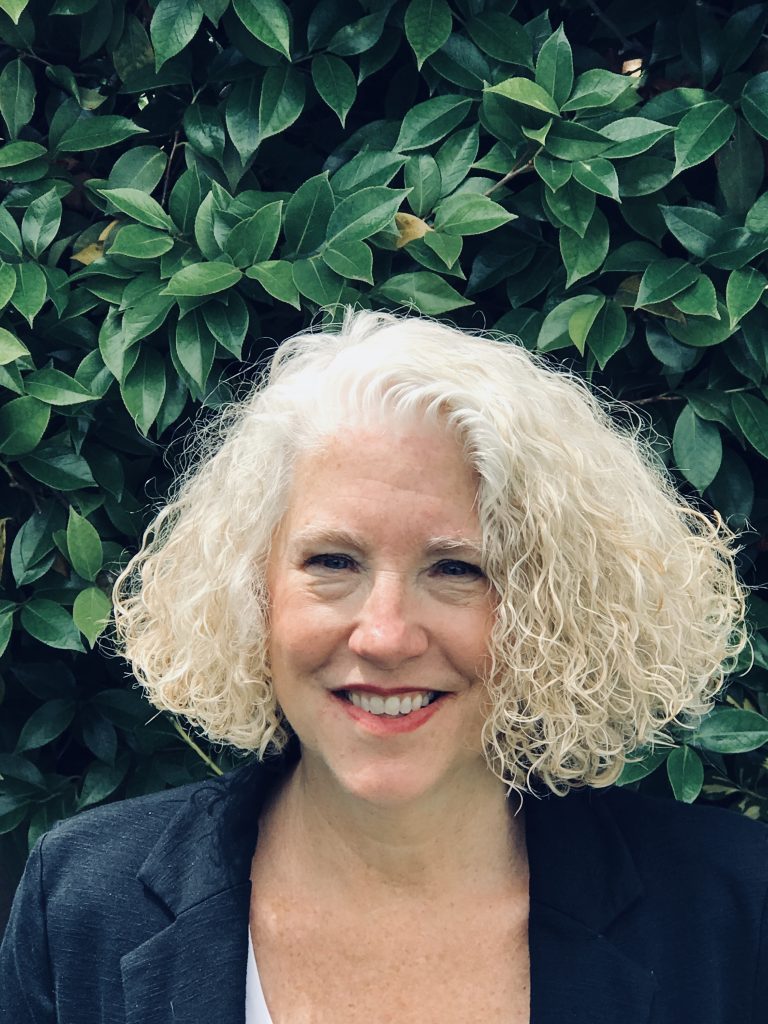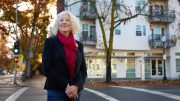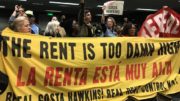By Nick Brunner
In a neighborhood called Mirasol Village, a new light rail stop was planned as part of a newly opened mixed-income housing center. But politics, money and COVID combined and the project was deemed too expensive in a vote last November.
After community feedback and reviewing the terms around the grant related to the project, the Sacramento Regional Transit board voted again — this time deciding to move ahead with construction. This will help a city that continues to work toward its Transit Oriented Development Ordinance adopted in 2018.
Cathy Creswell, president of the Sacramento Housing Alliance board and chair of the Mutual Housing California board, joined with Civic Thread’s Jordan Grimaldi to talk about the intersection between transportation and housing affordability and availability.
This conversation can be heard on the Housing in the Capital podcast.
Creswell: Our economic system isn’t set up so that the market is going to provide housing for people who can’t afford to pay more than, you know, $500 a month for rent. It just isn’t going to happen. So we need government support for financing. The state has really invested in the last few years and that’s been a big help. But we haven’t seen as much local investment as we would like to see and would need.
There’s also real resistance to affordable housing, and both from people who fear what it means to their community or who’s going to live there. But even to a large degree, local governments haven’t always viewed it as something that benefited their communities. So they set up rules and regulations that made it hard to build affordable housing. So that’s a big impact. And there’s just been insufficient policy frameworks at the state and local level to really advance things that we know work. And then finally, there’s just this historic legacy of racial discrimination and disparities that exist from the past, but live on in their impacts today. Until we can address those things, we’re going to continue to see communities suffer and certain communities suffer more than others.
Grimaldi: A lot of the affordable housing that we really see becomes further and further away from these city centers in urban areas where there are higher concentrations of jobs, and services, and programs and education. As we see the distance increasing between affordable housing and people’s daily activities and essential services, the transportation piece is so critical. Because how are people going to be able to access those opportunities? Cathy, you were talking about the financial burden that housing insecurity places on families and, correspondingly, it’s very similar in terms of transportation burden from a financial perspective if you have to commute further and further from your house … to your job. And gas prices are crazy. That’s gonna be difficult and challenging from a financial perspective.
A lot of our roadways are not safe for walking and biking. And this is especially true for our most vulnerable road users, which includes children and teens. And of course, this is especially true in our environmental justice communities where we see a higher majority of communities of color, greater pollution burdens, and these are where pedestrian and cyclist collisions and fatalities are disproportionately happening.
Creswell: I do feel like the housing community, the affordable housing folks, and those agencies that are funding it, have really recognized those kinds of locational issues. If you’re getting money to build new affordable housing from the state … you’re more competitive if you are building your affordable housing in what they now call “areas of opportunity,” which were what you just described. [These are] areas with better mobility, better schools, although you have to be mindful of not perpetuating any of the further disinvestments. So we still need to invest in communities that have been disinvested to give them affordable housing, because it also spurs other economic benefits for those communities.
I also think the affordable housing nonprofit developers who are building that affordable housing have long also recognized the importance. For example, there were a lot of nonprofits in the Bay Area that — because they have good transit systems — provided transit passes to their residents. Mutual Housing California just built housing in Davis, and has done some here, including bike lockers and creating linkages to existing pathways for both mobility and recreation in their affordable housing. So I feel like, especially the nonprofit affordable housing community, frequently will talk to residents prior to finalizing all the design features of new affordable housing, to make sure they are designing it in a way that really corresponds to the specific experiences and needs of those communities.
I do want to say: That’s not easy to do. The pattern of nonprofit affordable development that we saw was not so much a reflection of that’s what people thought were best. But rather, that’s those opportunities that were available. And the community has worked really hard to get the resources that we need to change the zoning. Part of the work that I did when I was with the state was working on Housing Element law, and making sure that cities up and down the state actually zoned land for multifamily housing, which many of them didn’t. And that’s the kind of opportunities that you need as a starter home. You are now getting more resources to be able to do it.
But I just wanted to be clear: It’s sort of the structure of how land use works and how our general plans were developed. We’re getting local governments to better recognize the need to integrate those things. So now a lot of local governments do incentivize building, particularly affordable housing, along corridors that have transit access, and things like that.

Grimaldi: Transportation funding, since at least the ’80s, has really followed what some people have known as the 80/20 split, where from federal funding federal dollars, roughly 80% of funding goes towards highways, and the remaining 20% goes towards public transit. So our public transit systems have just been critically disinvested for decades now. Unfortunately, that’s pretty similar to the funding split that we still see today. I know the Biden administration tried to make some strides on that with their most recent infrastructure bill. So it really does trickle down and has a lot of implications for our transportation and housing — systems at the state, regional and local level. …
With California Department of Transportation’s active transportation program, for example, they award a higher number of points to projects that are located within these SB 535 disadvantaged communities. So we’re seeing that more and more on the funding level. While it’s great that agencies at various levels are taking steps to really operationalize equity in these ways, it’s an iterative process and not necessarily a perfect solution in terms of addressing equitable investment.
The Meadowview area in South Sacramento, for example, for whatever reason, the formulas that are used and metrics that are used in these common matrices, overlook Meadowview even though we know anecdotally and and just from hearing from residents in this area and their lived experiences, it is a very high-need area. And so sometimes we can rely a little bit too heavily just on these tools and data. That’s really a big part of our approach at Civic Thread is to ensure that lived experiences are weighted equally in these types of decisions, because data is an important part of the picture, but it’s not the entirety.
In November 2022, the City of Sacramento adopted their Transportation Priorities Plan, and this was an effort Civic Thread was a part of this as on their community advisory committee as well. The TPP for short, is an effort to catalog their backlog of over 700 transportation projects from the past however many years that have no secured funding or haven’t been completed, and apply a scoring criteria or prioritization framework to that list of 700-plus projects so that the city knows which projects that they need to start with, which projects community members want to see most happen in the short term. Because that’s another thing about planning processes — they can take a very long time. I’ll give the city props. They really put in an effort to have this be a community-driven process. And there’s more information about that engagement that they led in partnership with local community advisers.

Creswell: You know, we’ve seen in the housing world a lot of that as well, in terms of when cities are developing. For the housing, the state law actually requires them to specifically engage with low and moderate income communities when they develop their practices. And they can be deemed not in compliance if they haven’t taken adequate steps. But it’s been a long time before we actually really started to see some meaningful engagement of community where it wasn’t just we’re going to have a workshop you all come out, we’ll tell you what we’re going to do, and you tell us what we think about it.
We’ve also worked really hard to work with local officials to get that really authentic engagement of community. [Not just] “here’s what we want to do, what do you think?” But to really first ask, “What is it you need? What are you? What are you seeing?” It’s not just we go to a meeting [and] tell you what we think, and then we never hear back from you. It’s having local officials come back and say this is what we think we heard, this is how we’re doing it, does that reflect what you were actually hoping for?
For example, the work that the Sacramento Housing Alliance and Civic Thread have done with the Sacramento Investment Without Displacement Coalition has really been about empowering residents to have control over when investments are happening in their community to ensure they actually benefit and not just suffer from the negative impacts. To me, [it’s] another example of where housing, transportation, equity, health, neighborhood associations all saw this real that when planning [was] done well, and when investments are done well, everybody benefits. But that hasn’t been how things happened, in part because communities weren’t engaged. … We’re still working with the city to actually get a community benefits ordinance that will benefit areas besides Aggie Square. But we’re hopeful that it’s sort of that foundational change of how local governments think about how they engage with their community. And that’s critical for really establishing strong communities, both from an affordable housing perspective, but from all the other things that make communities safe and healthy, in places where people can thrive.
Grimaldi: I really want to highlight the benefits of investing in active transportation equitably, and Safe Routes to Schools for the broader community. When we invest in roadways that are safer for people of all ages and abilities to walk and bike in rural, in all communities, it really contributes to a Sacramento that’s more livable, walkable, bikeable. And as long as we continue to allow our transportation systems to disconnect, rather than connect us, Sacramento will continue to be, unfortunately, as segregated as it really is.
We know that it will take a combination of practices, this is a very complex issue, and there’s no silver bullet, there’s no one-size-fits-all approach. I can’t underscore enough the importance of community-driven processes and solutions for that very reason.
Creswell: I would say to what we should feel hopeful about, and the folks who sometimes we are pushing back against, should be worried about is that there are these coalitions that are being built that are demanding better for our communities and for residents. Again, I think the Sacramento Investment Without Displacement Coalition is a good example of communities coming together and different issues coming together and accomplishing things.
We pushed the city to get $50 million for affordable housing, we got some transportation improvements, we got some health improvements. We got the city to agree to try to establish a community benefits agreement for the whole ordinance. So I’m hopeful that the coalitions that we’re building are really going to be the real driving force behind addressing all of these issues in a way that will benefit the people in our communities and the people who’ve too often been excluded. So I feel hopeful.
Correction: It was the Sacramento Regional Transit (SacRT) board that cast the votes (not the Sacramento City Council, as originally reported).
This conversation has been edited for length, flow and clarity. It has been adapted from our podcast, “Housing in the Capital,” which is recorded, edited and produced by Nick Brunner.
This story is part of the Solving Sacramento journalism collaborative. Solving Sacramento is supported by funding from the James Irvine Foundation and James B. McClatchy Foundation. Our partners include California Groundbreakers, Capital Public Radio, Outword, Russian America Media, Sacramento Business Journal, Sacramento News & Review, Sacramento Observer and Univision 19.






Be the first to comment on "Housing in the Capital: Cathy Creswell and Jordan Grimaldi on the intersectional benefits of investing in transit and active transportation "